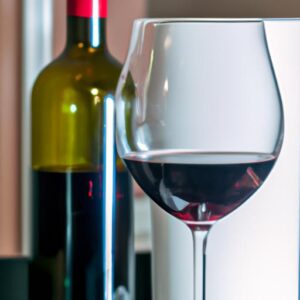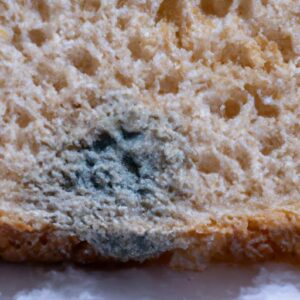Salmonella, a notorious bacteria responsible for countless cases of foodborne illnesses, is a formidable adversary that demands our attention. But fear not! In this article, I will unravel the secret weapon in our kitchens that can combat this microscopic menace – cooking. Yes, you heard it right. By simply wielding our culinary skills, we can potentially eliminate the lurking threat of salmonella and safeguard our health.
Understanding Salmonella Risks in Food
Before we delve into the power of cooking, let’s first grasp the magnitude of salmonella’s impact. Salmonella is a group of bacteria that can contaminate a wide range of food products, including poultry, eggs, meat, and even fruits and vegetables. Its presence can go unnoticed, making it a stealthy adversary.
When consumed, salmonella can wreak havoc on our bodies, leading to symptoms like diarrhea, abdominal pain, fever, and vomiting. In severe cases, it can even result in hospitalization or, in rare instances, prove fatal. The stakes are high, and that’s why understanding the role of cooking in combating salmonella is crucial.
The Role of Cooking in Eliminating Salmonella
Cooking acts as a powerful weapon against salmonella. Heat is the nemesis of this bacteria, as it cannot withstand the scorching temperatures that cooking can provide. By subjecting food to specific temperatures for certain durations, we can effectively kill the salmonella bacteria and enjoy our meals without worry.
To ensure thorough eradication, it is essential to know the optimal cooking temperatures and times for different foods. For example, poultry should be cooked to an internal temperature of 165°F (74°C), while ground meats should reach 160°F (71°C). By adhering to these guidelines, we can be confident in our ability to neutralize salmonella and protect ourselves and our loved ones.
Remember, the battle against salmonella starts with our cooking practices. In the following sections, we will explore the best cooking practices, handling techniques, and tips to ensure that we emerge victorious in this culinary crusade. So, let’s roll up our sleeves and dive into the kitchen to learn how we can conquer salmonella once and for all.
Stay tuned for the upcoming sections where we will uncover the secrets to cooking safely and effectively, ensuring that we come out on top in this culinary battle against salmonella. Together, we can master the art of cooking and reclaim our kitchens with confidence!
What is Salmonella?
Definition and Characteristics of Salmonella Bacteria
Salmonella, a genus of bacteria, comprises numerous species that can cause illness in humans. These bacteria are rod-shaped, gram-negative, and belong to the family Enterobacteriaceae. The most common types that afflict us are Salmonella enterica and Salmonella bongor
Salmonella bacteria possess a resilient outer membrane that enables them to survive in various environments, including the human digestive system. They have the ability to adapt and withstand harsh conditions, making them a formidable adversary. This adaptability allows salmonella to persist in contaminated food and water sources, posing a significant risk to our health.
Common Sources of Salmonella Contamination
Salmonella can infiltrate our food supply through various means. Poultry, such as chicken and turkey, is a notorious carrier of this bacteria. Raw eggs, too, can harbor salmonella internally or externally, making it crucial to handle them with care. Other animal-based products, such as meat and dairy, can also be potential sources of contamination.
Beyond animal products, fruits and vegetables can become contaminated with salmonella due to factors like improper handling, contaminated irrigation water, or contact with animal feces. It is essential to thoroughly wash and handle these produce items to minimize the risk of salmonella transmission.
Additionally, cross-contamination is a significant concern. When raw meat or eggs come into contact with other food items or surfaces, salmonella can spread and contaminate previously safe ingredients. This emphasizes the importance of proper food handling and preparation practices to prevent the transfer of bacteria.
By understanding the nature of salmonella bacteria and the common sources of contamination, we can be better equipped to protect ourselves. In the subsequent sections, we will explore the role of cooking in eliminating salmonella, empowering us to take charge of our kitchens and ensure the safety of our meals.
Understanding Salmonella Risks in Food
How Salmonella Contaminates Various Food Products
Salmonella contamination can occur in a variety of ways, infiltrating our food supply and posing a constant threat to our well-being. Let’s explore some common avenues through which this stealthy bacterium infiltrates our favorite culinary delights.
1. Contaminated Animal Products: One of the primary sources of salmonella contamination is through animal products, such as poultry, eggs, and meat. Salmonella can reside in the intestinal tracts of animals, and when proper hygiene measures are not followed during processing, the bacteria can transfer to the meat or eggs, ready to wreak havoc if not thoroughly cooked.
2. Cross-Contamination: Another sneaky method of salmonella transmission is through cross-contamination. This occurs when raw meats or eggs come into contact with other foods, utensils, or surfaces, transferring the bacteria onto them. If these contaminated items are then consumed without proper cooking, the risk of salmonella infection increases significantly.
3. Fresh Produce Contamination: Salmonella can also find its way into fruits, vegetables, and other fresh produce. Contamination can occur through contact with contaminated soil, water, or even through improper handling during harvesting, processing, or transportation. It is crucial to thoroughly wash and handle produce properly to minimize the risk of exposure to salmonella.
Potential Health Hazards Associated with Salmonella Infection
Salmonella infection can lead to a range of unpleasant symptoms and, in severe cases, pose serious health hazards. Let’s take a closer look at the potential risks associated with salmonella infection.
1. Gastrointestinal Distress: The most common symptoms of salmonella infection include diarrhea, abdominal pain, and nausea. These unpleasant gastrointestinal symptoms can persist for several days, causing discomfort and disrupting daily activities.
2. Dehydration: Prolonged diarrhea and vomiting resulting from salmonella infection can lead to dehydration, especially in vulnerable populations such as young children and the elderly. Replenishing fluids and electrolytes is crucial during such cases to prevent complications.
3. Complications for the Vulnerable: Salmonella infection can have more severe consequences for individuals with weakened immune systems, such as those with underlying health conditions or compromised immunity. In these cases, the infection can spread beyond the gastrointestinal system, leading to more severe illnesses that may require medical intervention.
Understanding the various ways salmonella contaminates our food and the potential health risks associated with infection empowers us to take necessary precautions. By implementing proper handling and cooking practices, we can minimize the chances of falling victim to this resilient bacterium. Stay tuned as we delve into the role of cooking in eliminating salmonella in the upcoming sections.
The Role of Cooking in Eliminating Salmonella
Exploring the Effectiveness of Cooking in Killing Salmonella
Cooking is not just a means to satisfy our taste buds; it is a formidable weapon in our quest to eliminate salmonella. When heat is applied during the cooking process, it works to destroy the salmonella bacteria, rendering them harmless and reducing the risk of infection. But how effective is cooking in this battle against salmonella?
Research and scientific studies have shown that proper cooking techniques can significantly reduce the presence of salmonella in our food. The heat generated during cooking disrupts the bacteria’s cellular structure, leading to their demise. However, it is important to note that the effectiveness of cooking in killing salmonella depends on various factors, such as the type of food and the cooking method employed.
Optimal Cooking Temperatures and Times to Ensure Salmonella Eradication
To ensure the complete elimination of salmonella, it is essential to cook food to specific temperatures and for adequate durations. The United States Department of Agriculture (USDA) provides guidelines for safe cooking practices to combat salmonella.
For poultry, such as chicken or turkey, it is crucial to reach an internal temperature of 165°F (74°C) in all parts of the bird. This ensures that any potential salmonella present in the meat is fully eradicated. Similarly, ground meats, including beef, pork, or lamb, should be cooked to an internal temperature of 160°F (71°C) to ensure thorough salmonella eradication.
When cooking seafood, it is imperative to ensure that fish reaches an internal temperature of 145°F (63°C), while shellfish should be cooked until their shells open. Eggs, another common source of salmonella, should be cooked until both the whites and yolks are firm.
By following these optimal cooking temperatures and times, we can be confident in our ability to eliminate salmonella from our meals, reducing the risk of foodborne illnesses and enhancing our overall well-being.
In the next section, we will explore the best cooking practices and techniques to maximize the effectiveness of cooking in eliminating salmonella. So, let’s continue our culinary journey and equip ourselves with the knowledge to conquer salmonella in our kitchens!
Conclusion
In conclusion, the question of whether cooking can kill salmonella is met with a resounding “yes.” Cooking is a powerful tool that can effectively eliminate salmonella bacteria, ensuring our meals are safe and free from contamination. By understanding the risks associated with salmonella and adopting best cooking practices, we can protect ourselves and our loved ones from foodborne illnesses.
Throughout this article, we have explored the importance of cooking in combating salmonella. We learned about the risks of salmonella contamination in various food sources and the potential health hazards it poses. We also discovered how cooking acts as a crucial step in eradicating salmonella, utilizing heat to neutralize the bacteria effectively.
To ensure the best results, proper handling and storage of raw ingredients are essential. By following safe cooking methods and techniques, such as using a food thermometer to ensure thorough cooking, we can be confident in eliminating salmonella. Additionally, by implementing tips for preventing cross-contamination, we can further reduce the risk of spreading this harmful bacterium.
It is imperative that we remain vigilant in our approach to cooking and prioritize food safety. By adopting these practices, we can not only protect ourselves but also contribute to a healthier and safer community. So, let’s embrace the power of cooking, armed with knowledge and skills, and continue to enjoy delicious meals with peace of mind.
Remember, the battle against salmonella starts in our kitchens. By taking the necessary precautions and utilizing the power of cooking, we can triumph over this microscopic foe. So, let’s cook with confidence, knowing that we have the ability to conquer salmonella and keep our loved ones safe. Stay informed, stay empowered, and let’s continue to enjoy the pleasures of cooking without compromising our health.


